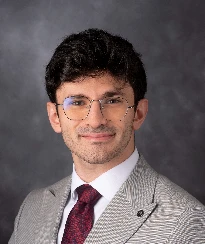2935 - To Boost or Not to Boost: Local Control in HER-2 Positive Breast Cancer after Neoadjuvant Therapy
Presenter(s)

M. El-Jammal1,2, C. Chung3, O. Saifi4, J. G. Bazan Jr5, and Y. Zeidan6; 1University of Texas MD Anderson Cancer Center, Houston, TX, 2American University of Beirut, Beirut, Lebanon, 3Institute of Data Science in Oncology, The University of Texas MD Anderson Cancer Center, Houston, TX, 4Department of Radiation Oncology, Mayo Clinic, Jacksonville, FL, 5Department of Radiation Oncology, City of Hope National Medical Center, Duarte, CA, 6Lynn Cancer Institute, Baptist Health South Florida, Boca Raton, FL
Purpose/Objective(s): Radiation therapy (RT) is an integral component of breast conserving therapy. Early randomized clinical trials have demonstrated that an additional lumpectomy cavity boost (LCB) improves local control (LC). However, LCB is associated with an increased risk of late toxicity, including breast fibrosis, and altered cosmesis. This study aims to evaluate whether LCB improves LC in patients with HER-2 positive breast cancer receiving modern neoadjuvant systemic therapy (NST) including HER2-directed therapy, and whole breast irradiation (WBI).
Materials/Methods: We performed a pooled analysis of 132 HER-2 positive breast cancer patients from the NeoSphere and TRYPHAENA trials. All patients underwent NST with trastuzumab/pertuzumab followed by breast conserving surgery (BCS), and WBI. The primary endpoint was local recurrence (LR), defined as an in-breast recurrence, analyzed using Kaplan-Meier method and Cox proportional hazards modeling.
Results: Among the 132 patients, 97 patients (73.5%) received a boost at a median dose of 10 Gy following WBI completion. A total of 58 patients (44%) exhibited pathological complete tumor response in the breast (ypT0) and 74 patients (56%) had residual primary disease in the breast (ypT+). Patients that received LCB tended to have higher ypT stage, grade 3 (versus grade 1-2) disease and were younger than patients in the no boost group. At a median follow-up of 5 years, LC for the entire cohort was 94.4%, with 7 LRs detected. All 7 LRs occurred within the LCB group. Patients with ypT0 had 5-year LC of 96.6% as compared to 92.4% in the ypT+ group (p = 0.34). Within the ypT0 and ypT+ subgroups, LCB did not demonstrate a significant benefit in LC (p = 0.25 and p = 0.34, respectively). On multivariate cox analysis adjusting for age, grade, ypT stage, and surgical margins; LCB was not independently associated with improved LC. Firth’s likelihood regression confirmed the lack of significant association between LCB and LR.
Conclusion: Patients with HER-2 positive breast cancer treated with NST, BCS and WBI demonstrated excellent LC. Our analysis does not support routine use of LCB after modern NST and WBI. Definitive evidence regarding the role of LCB in this population requires randomized clinical trials to identify subgroups that derive a meaningful benefit from LCB.
